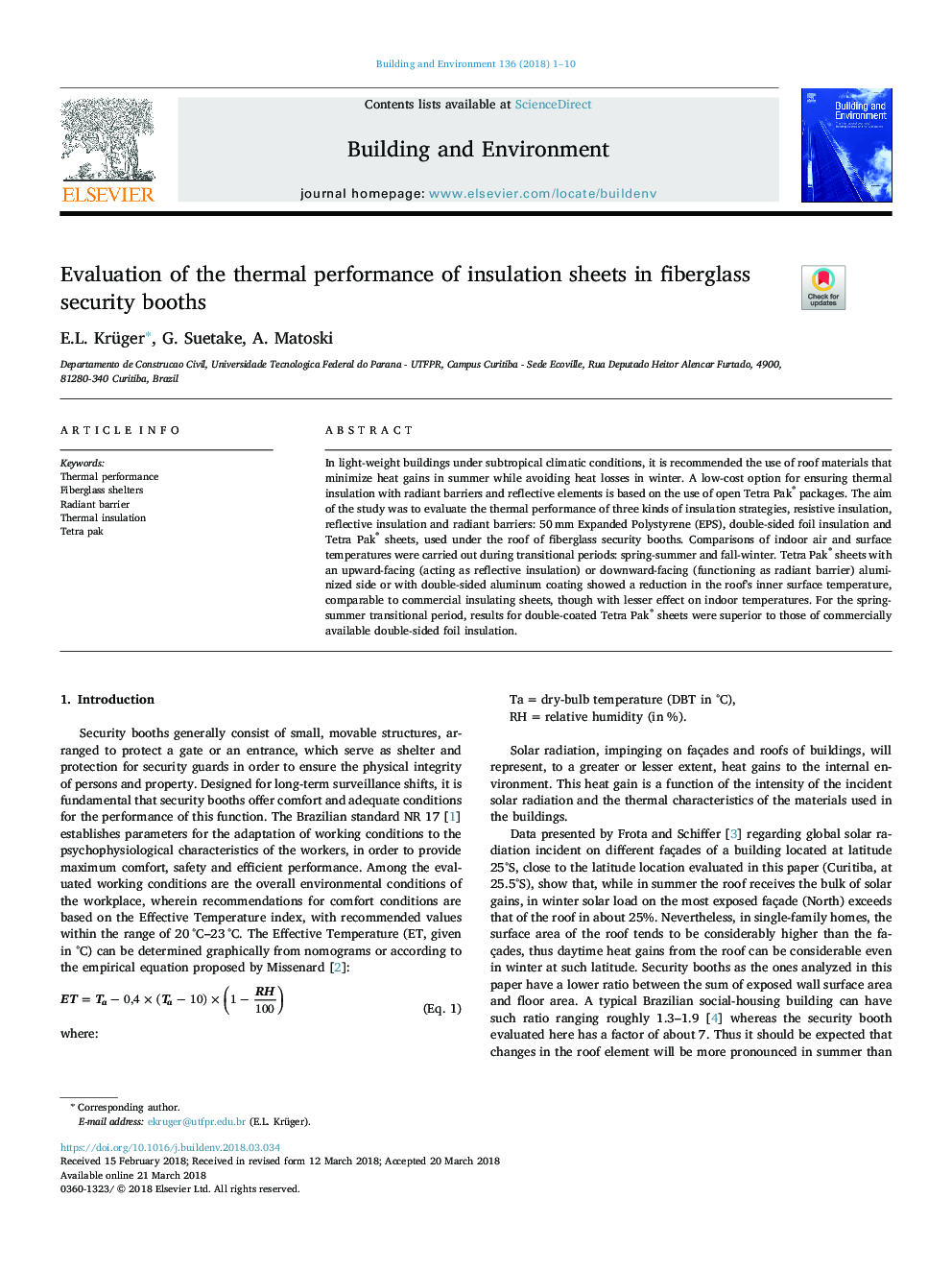| Article ID | Journal | Published Year | Pages | File Type |
|---|---|---|---|---|
| 6697409 | Building and Environment | 2018 | 10 Pages |
Abstract
In light-weight buildings under subtropical climatic conditions, it is recommended the use of roof materials that minimize heat gains in summer while avoiding heat losses in winter. A low-cost option for ensuring thermal insulation with radiant barriers and reflective elements is based on the use of open Tetra Pak® packages. The aim of the study was to evaluate the thermal performance of three kinds of insulation strategies, resistive insulation, reflective insulation and radiant barriers: 50â¯mm Expanded Polystyrene (EPS), double-sided foil insulation and Tetra Pak® sheets, used under the roof of fiberglass security booths. Comparisons of indoor air and surface temperatures were carried out during transitional periods: spring-summer and fall-winter. Tetra Pak® sheets with an upward-facing (acting as reflective insulation) or downward-facing (functioning as radiant barrier) aluminized side or with double-sided aluminum coating showed a reduction in the roof's inner surface temperature, comparable to commercial insulating sheets, though with lesser effect on indoor temperatures. For the spring-summer transitional period, results for double-coated Tetra Pak® sheets were superior to those of commercially available double-sided foil insulation.
Related Topics
Physical Sciences and Engineering
Energy
Renewable Energy, Sustainability and the Environment
Authors
E.L. Krüger, G. Suetake, A. Matoski,
